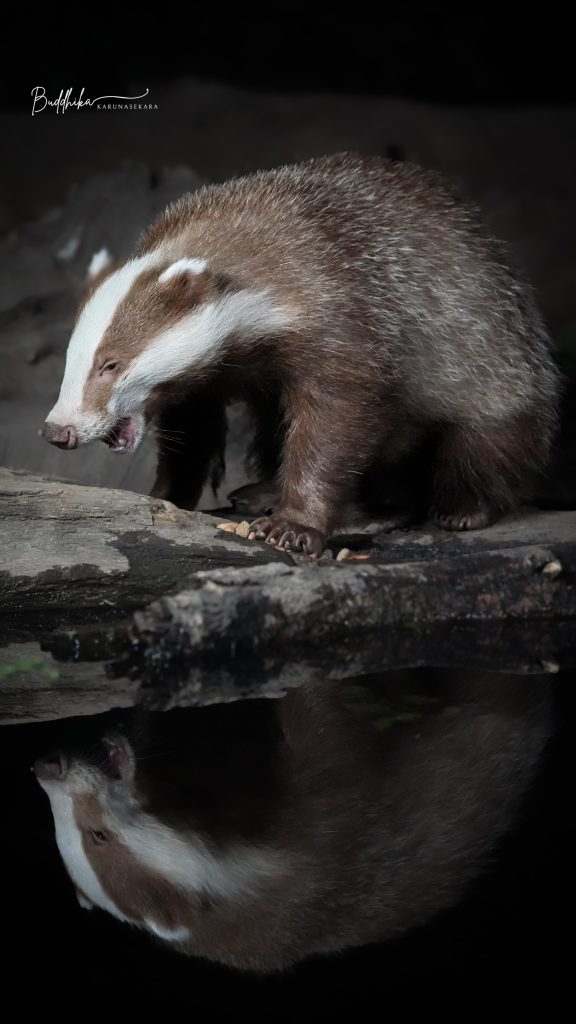
Stocky, striped, and stubborn, the badger is a creature of the twilight. Emerging from its earthworks at dusk, it moves with a steady determination, digging deep tunnels that form ancient, sprawling setts. Its black-and-white mask gives it an air of mystery, a nocturnal figure that has always lived close to human settlements yet just beyond the reach of daily life.
In British and Celtic folklore, the badger often represents persistence and independence. Its habit of digging was seen as a symbol of tenacity, a creature that follows its own path without concern for others. Known as brock in old English and Scots, it became a familiar figure in rural life, sometimes admired for its resilience and sometimes feared for its supposed stubbornness. Folktales often show the badger as a gruff but honest character, a dweller of thresholds between the seen and unseen worlds.
In Japanese folklore, the badger, or mujina, takes on a very different role. It is a shapeshifter, mischievous and sometimes frightening, capable of disguising itself as a human. Ghost stories tell of travellers meeting strangers on the road who vanish into the form of a badger, leaving only confusion behind. Yet the mujina is not always malicious. Like many trickster figures, it teaches caution and humility through its pranks.
Among Native American traditions, the badger is seen as a symbol of determination and healing. Its relentless digging mirrors the human search for roots, medicine, and hidden truths. To some Plains tribes, the badger was regarded as a helper spirit for healers, lending its strength to those who sought cures in the earth. Its refusal to back down in the face of threats became a lesson in courage.
In European superstition, badgers were often connected to omens. Meeting a badger at night could be seen as unlucky, while in some regions carrying a badger’s tooth was thought to bring protection. Their burrows, sometimes centuries old, were believed to hold earth charged with magical power. Farmers often both cursed and respected the animal, for while it raided crops and hens, it also stood as a guardian of the wild places at the edge of fields.
In more modern folklore, the badger has softened into a beloved character of stories. From Kenneth Grahame’s The Wind in the Willows to Beatrix Potter’s tales, the badger appears as a wise and steady presence, sometimes gruff but always dependable. These literary depictions echo older beliefs in the badger’s independence and quiet strength, recasting it as a trusted neighbour rather than a feared omen.
Despite its modest size, the badger has dug deep into human imagination. It is an animal of the twilight, a creature of hidden paths and secret lives, yet always near at hand. To glimpse one crossing a country lane at night is to brush against the quiet endurance of the wild, a reminder that even in the most familiar landscapes, mystery waits just beyond the hedgerow.
